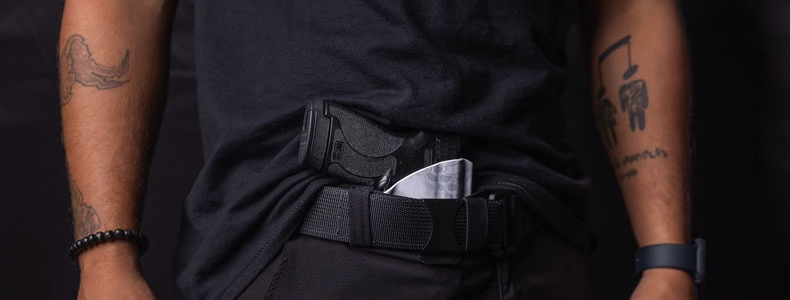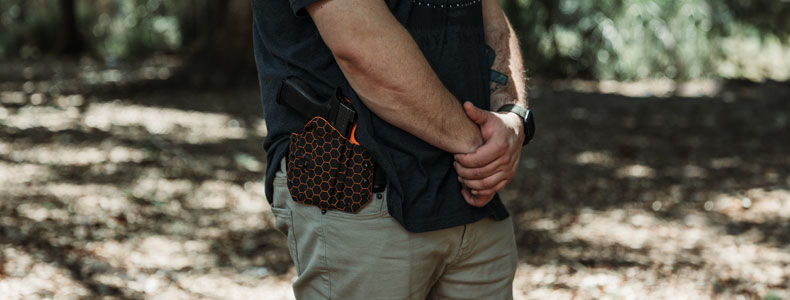What is an Adjustable Holster, and What Are the Benefits of Carrying One?
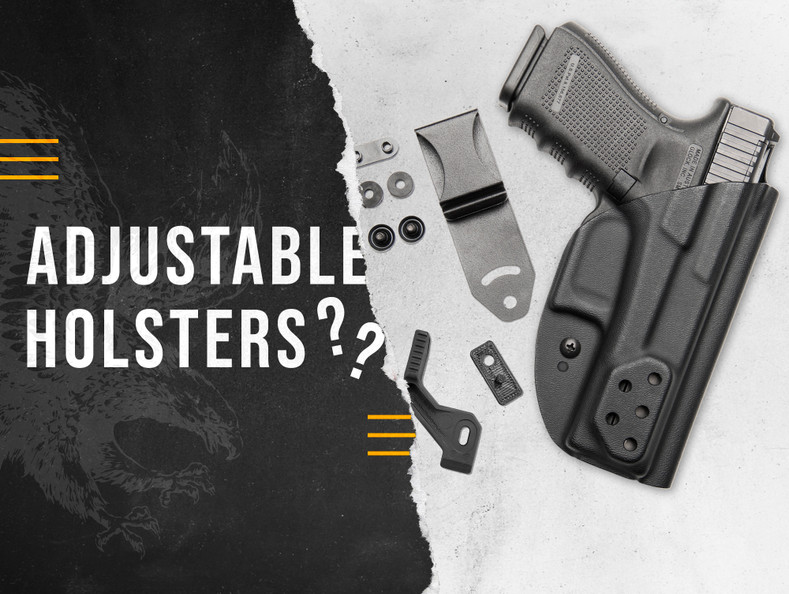
If you’ve been struggling to find a holster that sits juuuust right on your hip, odds are you haven’t tried one with adjustable features.
Utilizing an adjustable pistol holster can go a long way in ensuring comfortable, print-free concealed carry. This style of holster, often Kydex, allows you to change its orientation so you can control its position on your waistline, eliminating issues like printing and discomfort.
There are three main components of a holster that are often adjustable: retention, cant, and ride height. Although every adjustable holster is different, these three features make it easy to customize your carry setup to help you find that “sweet spot” of comfort and concealment.
In this article, we’ll go over all three of these adjustability options in-depth to help you better understand the purpose of each and determine which ones you want in your next carry holster.
Products Mentioned In This Article
Adjustable Retention
Retention is the mechanism that keeps your gun from falling out of its holster. It determines how tightly or loosely your firearm is secured, and how easy or difficult it is to draw. Not only is it a matter of preference, but retention is also a very important safety feature that keeps your pistol from coming loose and helps prevent others from grabbing it out of your holster.
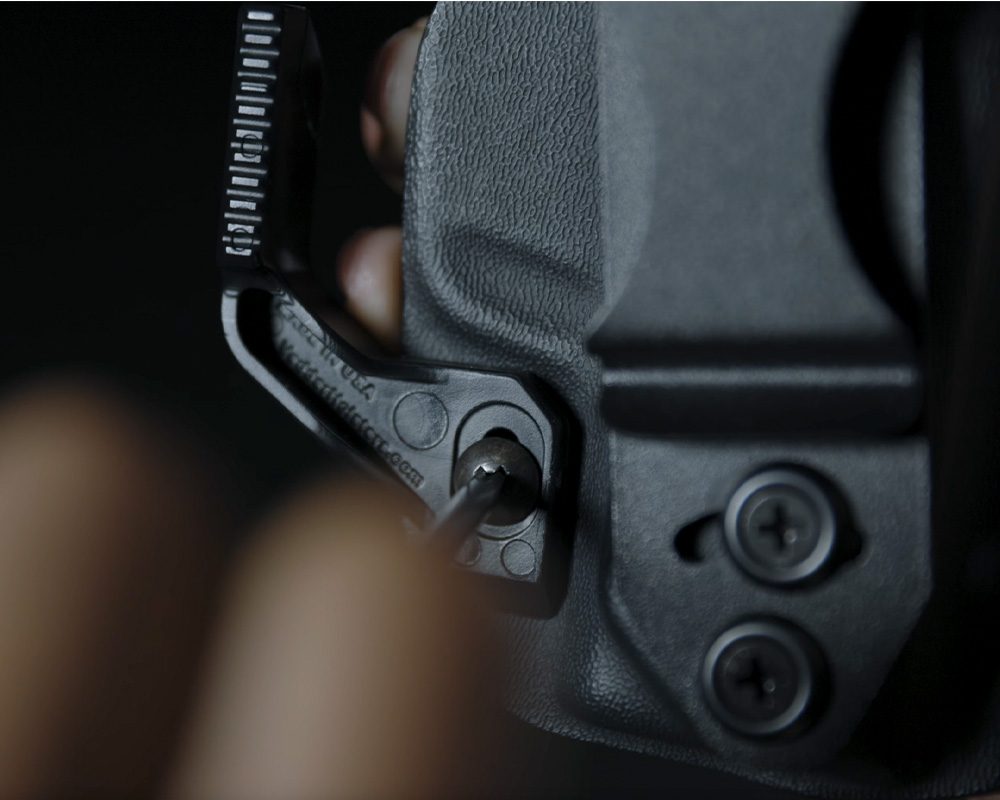
There are two main types of retention: active and passive. Passive retention, sometimes referred to as level one retention, means that the design and shape of the holster keep your weapon in place. Alternatively, active retention, which includes level two retention and beyond, involves a built-in device that you have to engage to release your pistol. Holsters with active retention are often used by law enforcement or open carriers who need that extra level of security, while passive retention is more common among concealed carriers.
Many holsters with passive retention are adjustable, allowing you to determine exactly how tight or loose you want them to fit. Making a Kydex holster retention adjustment is usually pretty easy, and can be accomplished by simply turning the holster’s retention screw until it’s where you want it to be. How tight or loose you like your retention to be is entirely up to your personal preference, though it’s typically recommended to aim for somewhere in between.
At Vedder Holsters, all of our full-Kydex holsters come with level one adjustable retention. To learn more about the ins and outs of holster retention and the benefits of each kind, read our “Basics of Holster Retention” article here.
Adjustable Ride Height
Holster ride height is another great adjustable feature that can help make your firearm easier to conceal. In short, ride height refers to how high or low your pistol sits in relation to your belt.
There are three main levels of ride height: high, mid, and low. A mid-ride holster sits exactly where it sounds like – right at the center of your waistline, or just below it. A high ride holster is positioned higher on your waist with the butt of the firearm being situated above your belt. Finally, low ride holsters are most common for deep concealment, allowing you to position it lower on your belt and farther inside your waistband.
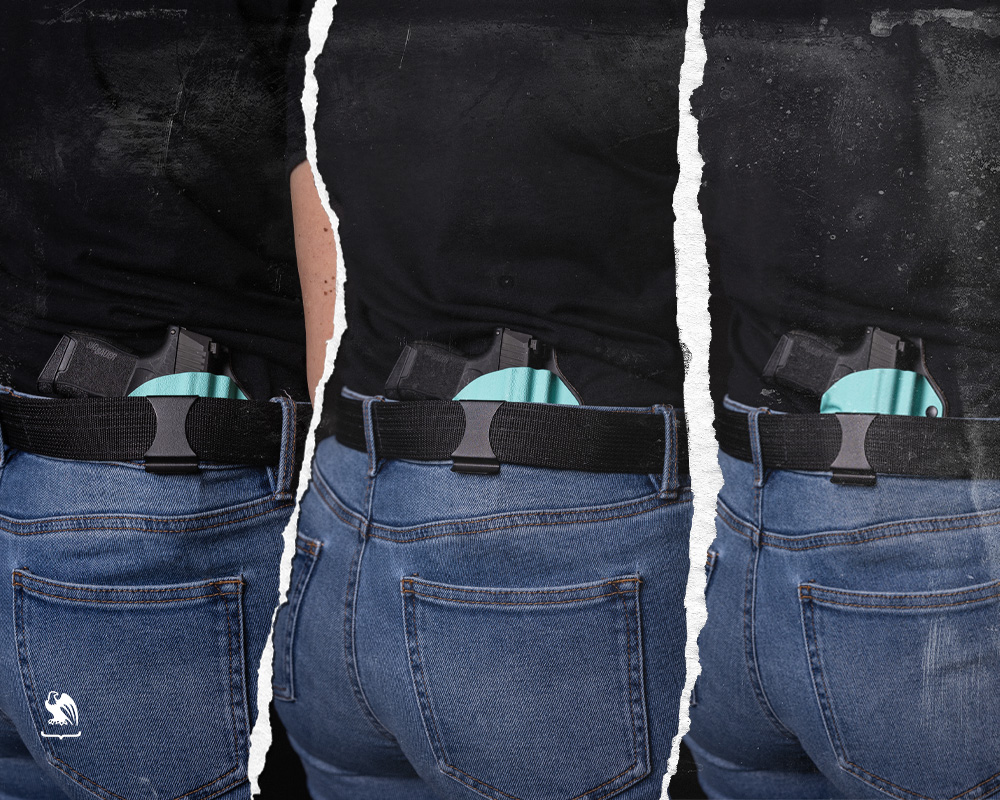
Every level of ride height is useful in different situations. Low ride, for example, is often used if concealment is your main priority. Alternatively, high ride holsters tend to be more comfortable and certainly make your pistol easier to access, especially if you’re sitting for long periods. Finally, mid ride is a great middle-of-the-road solution and works in most conditions.
While all three of these positions have their purpose and advantages, carrying an adjustable ride height holster allows you to switch between all three positions depending on what you’re wearing, where you’re going, and what you’re doing each day. These holsters are super easy to adjust, simply requiring you to change the placement of your clip on the holster.
Many of the concealed carry holsters we offer at Vedder feature all three levels of adjustable ride height, allowing you to customize your holster however you please. For more information on ride height and the benefits of each level, check out our article “Low, Mid, High: Choosing the Ideal Holster Ride Height.”
Adjustable Cant
Finally, cant is one of the most important and useful adjustable elements a holster can have. Holster cant simply refers to the angle at which your holster sits on your waistline. By tilting your pistol forward or backward, you can modify both where the grip is sitting above your belt and where the barrel is sitting below it.
Choosing a holster with the right cant angle can make all the difference in the comfort and concealability of your firearm. Because everyone has different needs based on their body type, carry position, wardrobe, and weapon of choice, being able to adjust your holster cant angle is incredibly useful.
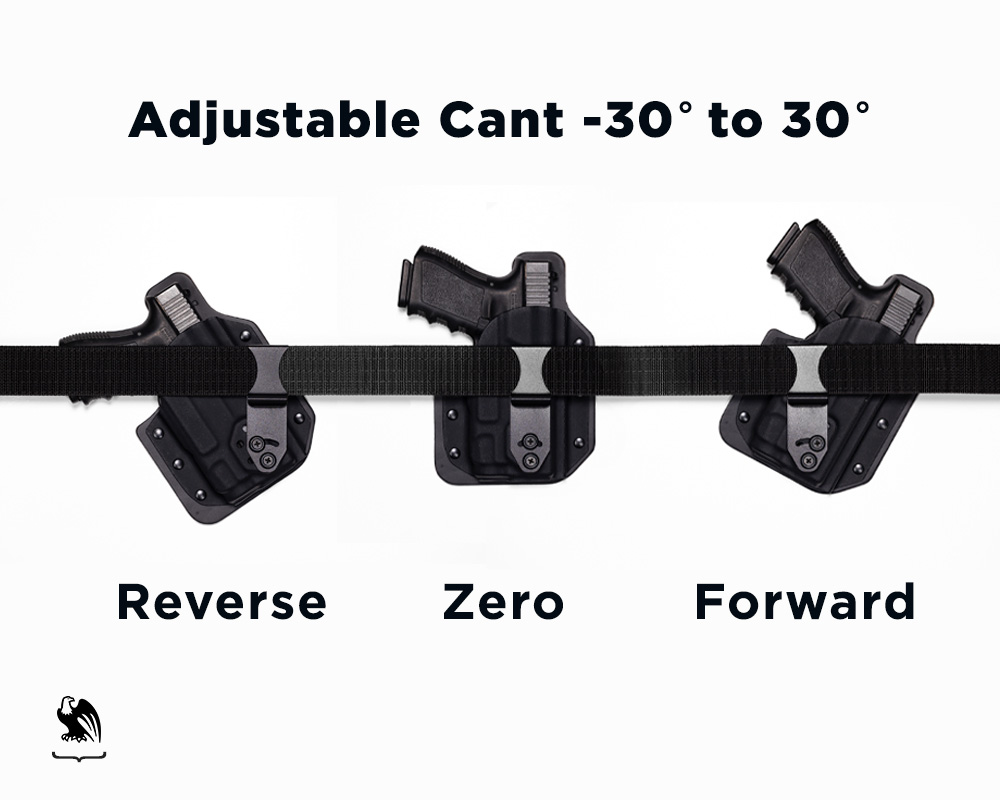
Although some people do utilize holsters with a neutral cant, or no cant, these are usually best for open carry in the 3 o’clock position and are not common for concealed carry. Holsters with a forward cant, or “positive cant,” usually work best for those carrying on their strong side in the 4-5 o’clock positions. Conversely, reverse cant, or “negative cant,” is more common for those carrying cross-draw or appendix. One of the most common cant angles is known as “FBI cant,” and is angled slightly forward between 10-15 degrees and makes drawing from the 3-5 o’clock positions easy and accessible.
At the end of the day, the cant angle you need may vary from day to day based on the position you’re carrying in, what you’re wearing, and your planned activities. Carrying a holster with adjustable cant gives you the flexibility you need to be prepared for anything. At Vedder Holsters, many of our IWB and OWB Kydex holsters have adjustable cant. The OWB ProDraw® Paddle Holster has 15 degrees of forward and reverse cant, while our IWB LightTuck® and RapidTuck® can be tilted up to 30 degrees each way. Changing your holsters cant is as simple as loosening the screw on your clip, positioning the clip where you want it, and then tightening the screw back down.
To dive deeper into the subject of cant and how to choose the right angle for you, take a look at our article “What Is Holster Cant and Why Is It Important?”
Best Adjustable Holster
At Vedder Holsters, we offer a variety of IWB and OWB adjustable holster styles. While each of our products has different features and configuration options, many of them offer adjustable ride height, cant, or retention – or all three. Our most adjustable holster, the Vedder LightTuck®, has three levels of adjustable ride height, adjustable retention, and up to 30 degrees of forward and reverse cant – which is twice the range of most holsters on the market.
To check out our entire collection of IWB, OWB, and pocket carry holsters, visit our Holsters by Gun Model page for Kydex holsters that are custom-made for your weapon of choice.
Interested in items beyond holsters? Take a look at our Resources Page for links to recommended products like lights, lasers, first aid, maintenance, and more. Or, browse our selection of apparel, gun belts, and accessories. And be sure to visit our sister company, GeoGrit, to view our collection of durable, RFID-blocking minimalist wallets.
